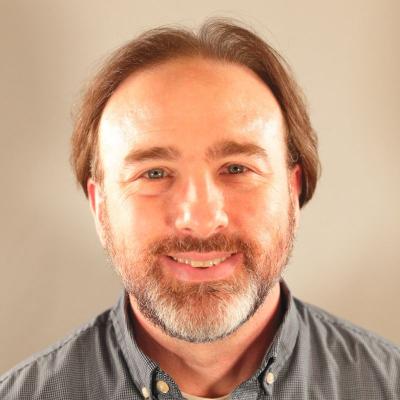
Associate Professor
Dr. Foulk loves teaching students about cells and the molecules that make them work. Cells are the basic building blocks of all living organisms on this planet. A solid understanding of how cells operate can be applied in many different disciplines within the biological sciences, from the evolution of species to medical applications. Dr. Foulk is a passionate educator, who passes his enthusiasm for cells and the molecules of biology on to his students in the hope that they too will come to appreciate the beauty and sophistication of the fundamental unit of biology. Dr. Foulk is also the faculty advisor for the new Bioinformatics concentration within the biology department.
- Ph.D., Brown University, 2007
- B.A., Augustana College, 1996
- BIO 142/143: Cellular and Molecular Biology and laboratory
- BIO 310/311: Genetics and laboratory
- BIO 390: Bioinformatics: A Practical Introduction
- BIO 430: Molecular Biology
- BIO 514: Graduate Genetics
- BIO 466/474: Biology Thesis/Biology Practicum
- FSAT 300: Introduction to Tropical Biology
- Dr. Foulk’s research focuses on the unique biology of the fungus fly, Bradysia coprophila. This non-canonical fly model system exhibits several unique and interesting biological phenomena that merit further investigation, such as: chromosome elimination, monopolar meiotic spindles, nondisjunction of the X dyad during male meiosis, chromosome imprinting, a unique sex determination mechanism and developmentally regulated locus specific gene amplification. The recent sequencing and high-quality assembly of the Bradysia genome has greatly facilitated research into these biological traits. Students in his lab are working on several different projects: characterization of mating and courtship behavior, cloning and characterization of cold tolerance genes. Currently, students are using ATAC-seq (Assay for Transposase Accessible Chromatin with high throughput sequencing) to determine chromatin architecture during developmentally regulated, locus specific DNA amplification in the larval, salivary gland polytene chromosomes.
- Dr. Foulk is always looking for students interested in getting involved in laboratory research. Students generally begin by learning how to maintain the Bradysia colony in the lab. Later, they can move on and conduct original research projects culminating in a senior thesis. Come ask Dr. Foulk about these opportunities and he will be delighted to introduce you to the joys of Bradysia research!
- Urban JM, Foulk MS, Bliss JE, Coleman CM, Lu N, Mazloom R, Brown SJ, Spradling AC, Gerbi SA. (2021) High contiguity de novo genome assembly and DNA modification analyses for the fungus fly, Sciara coprophila, using single-molecule sequencing. BMC Genomics 6: 643.
- Yamamoto Y, Gustafson EA, Foulk MS, Smith HS, Gerbi SA. (2021) Anatomy and evolution of a DNA replication origin. Chromosoma130: 199-214.
- Urban JM, Foulk MS, Casella C, Gerbi SA. (2015) The hunt for origins of DNA replication in multicellular eukaryotes. F1000Prime Rep. 7: 30.
- Foulk MS, Urban JM, Casella C, Gerbi SA. (2015) Characterizing and controlling intrinsic biases of lambda exonuclease in nascent strand sequencing reveals phasing between nucleosomes and G-quadruplex motifs around a subset of human replication origins. Genome Res. 25: 725-35.
Dr. Foulk enjoys introducing incoming students to the wonders of Cellular and Molecular Biology in the biology department’s introductory series. In Genetics, students investigate how biological information is stored in the quintessential molecule of Biology, DNA, and the mechanisms by which it is inherited. Upper-level classes such as A Practical Introduction to Bioinformatics and Molecular Biology focus on fine grained analysis of DNA and how to investigate and manipulate DNA sequences to investigate various aspects of cellular biology.